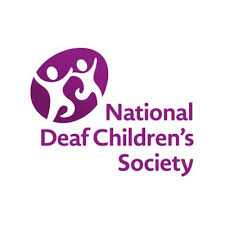5.9. Children and young people reports
These are ways of looking at the quality and experience of the classroom listening environment from the point of view of the individual student.
Listening Inventories for Education (LIFE)
This sub-section is under development
Listening Inventories for Education Revised (LIFE-R)
The expanded LIFE‐Revised (LIFE-R) has a tool for the individual student to reflect upon and share their listening experiences called the Student LIFE‐R: Student Appraisal of Listening Difficulty. This can be used alongside the Teacher LIFE‐R: Teacher Appraisal of Listening Difficulty.
It can be accessed from the Success for Kids With Hearing Loss website using the link below and used free of charge . It is available in both electronic and paper formats. The aims of the resource are described below:
Using the LIFE-R will allow students (age 8+) to self-report the challenges they typically encounter in school listening situations and identify how they respond to these challenges. Student information is gathered for the purpose of developing individualised reports prioritizing challenging situations, specifying teacher accommodations, and suggesting self-advocacy skill development in identified areas of need.
For more information:
NDCS – Information for professionals – LIFE(R)
Success for kids with hearing loss – LIFE (R)
Abbreviated Profile of Hearing Aid Benefit (APHAB)
Abbreviated Profile of Hearing Aid Benefit (APHAB)
The Abbreviated Profile of Hearing Aid Benefit (APHAB) was co-written by Dr Robin Cox and Ginny Alexander at the Hearing Aid Research Lab (HARL) at the University of Memphis.
This 24-point self-assessment inventory allows patients to report on their listening and associated communication experiences in various everyday situations. The respondent is asked to rate the ease and comfort of listening in each of the 24 situations using a seven-point scale rated A-–G, depending on the extent to which they identify with the statement. The benefit of their personal hearing devices is calculated by comparing the patient’s reported difficulty in the unaided condition with their amount of difficulty when using amplification. The APHAB provides scores for four subscales: ease of communication (EC), reverberation (RV), background noise (BN), and aversiveness (AV)
To administer and interpret the APHAB, professionals need the APHAB questionnaire and a method for scoring the questionnaire results.
APHAB can be accessed at Hearing Aid Research Lab (HARL)
See the information from the APHAB site below:
“You can download and print a copy of the APHAB questionnaire and the instructions for manual scoring from this website. APHAB scoring software for Windows is also available for free download on this page. The APHAB software provides a way for patients or hearing aid professionals to enter responses directly into an electronic record that can be saved for future use. Responses are scored automatically and can easily be compared to norms.
Obtaining the APHAB Questionnaires
The APHAB Questionnaires are in PDF format and can be viewed, printed, and saved to your computer using the free Adobe Acrobat Reader program.
The downloadable translations of the APHAB inventory are versions of Form A. We are grateful to Phonak Hearing Systems for providing some of the translations. Other translations have been provided by persons who were fluent in both English and the target language. Translation guidelines were provided. However, we cannot guarantee that translated items have not been modified from the original. New translations are added as they become available to us. In posting these translations of our website, our goal is to provide a “standard” translation for a language that clinicians and researchers in each country can use, examine, and perhaps improve. At present, there is evidence that multiple translations have been made in some languages and this is clearly not an optional situation.
Please note that the instructions accompanying these translations are an abbreviated version of the full instructions. For standard administration, the full instructions should be provided, either verbally or in writing. The full instructions are:
INSTRUCTIONS: Please circle the answers that come closest to your everyday experience. Notice that each includes a percentage. You can use this to help you decide on your answer. For example, if a statement is true about 75% of the time circle “C” for that item. If you have not experienced the situation we describe, try to think of a similar situation that you have been in and respond for that situation. If you have no idea, leave that item blank.
Obtaining the instructions for manual scoring:
A three page document is available to use in scoring the APHAB manually. The first two pages list the items contributing to each subscale for Form A and Form B of the questionnaire. The third page contains the instructions for scoring each item and calculating scores. This document file is available as an Adobe Acrobat PDF file.
Obtaining the APHAB Automatic Scoring Software:
The APHAB software Windows version is available from the AUSP Software Group as a zip file for free download on this page (at right).”
Previous pages in this section
5.5 Sentence testing
5.6 Automated tests
5.7 Parent/guardian reports (under construction)
5.8 Teacher reports (under construction)
Other sections
- Section 1 Anatomy and physiology of the ear
- Section 2 Aetiology and types of deafness
- Section 3 Auditory perception and hearing testing
- Section 4 Acoustics and physics of sound
- Section 6 Hearing technologies




